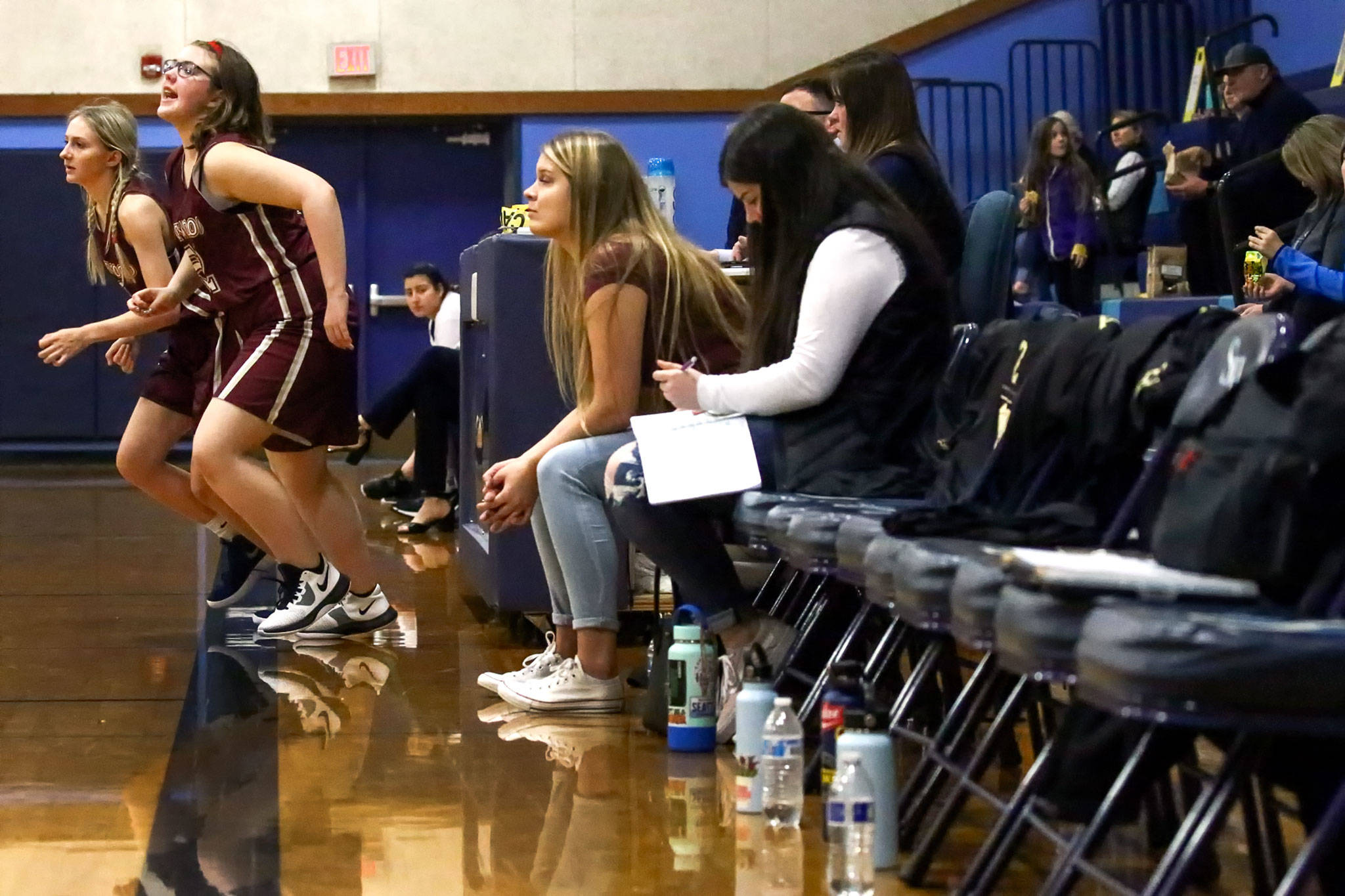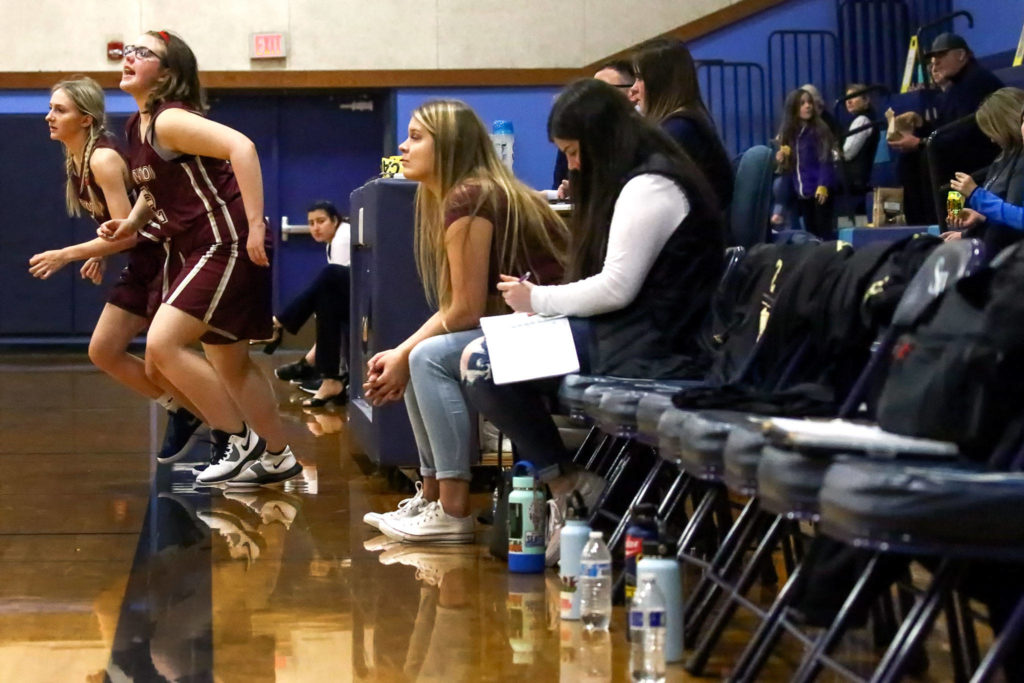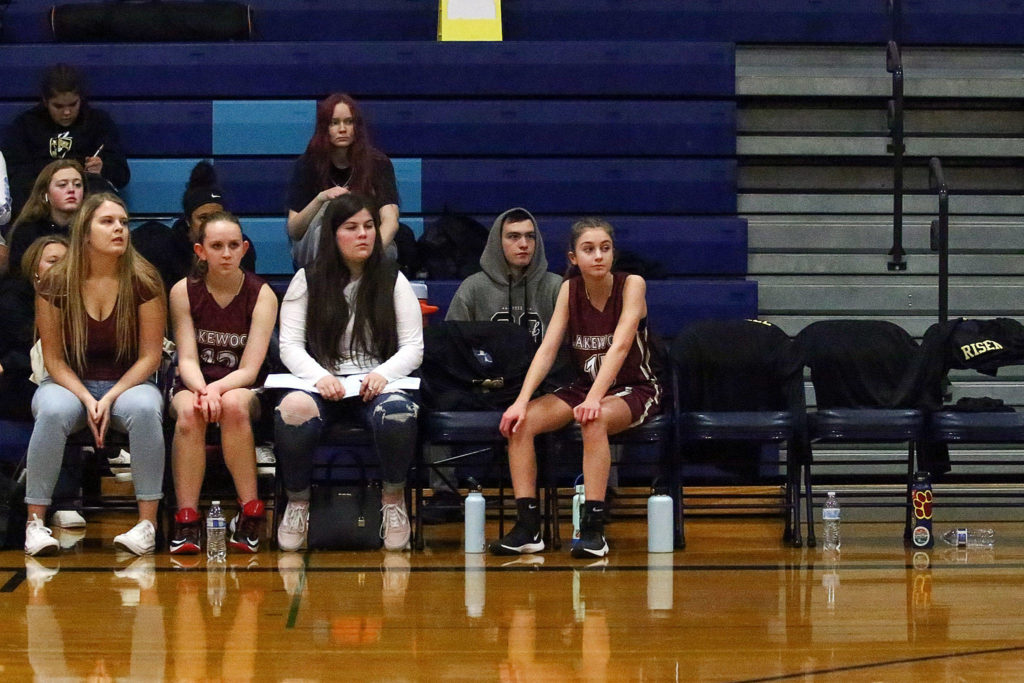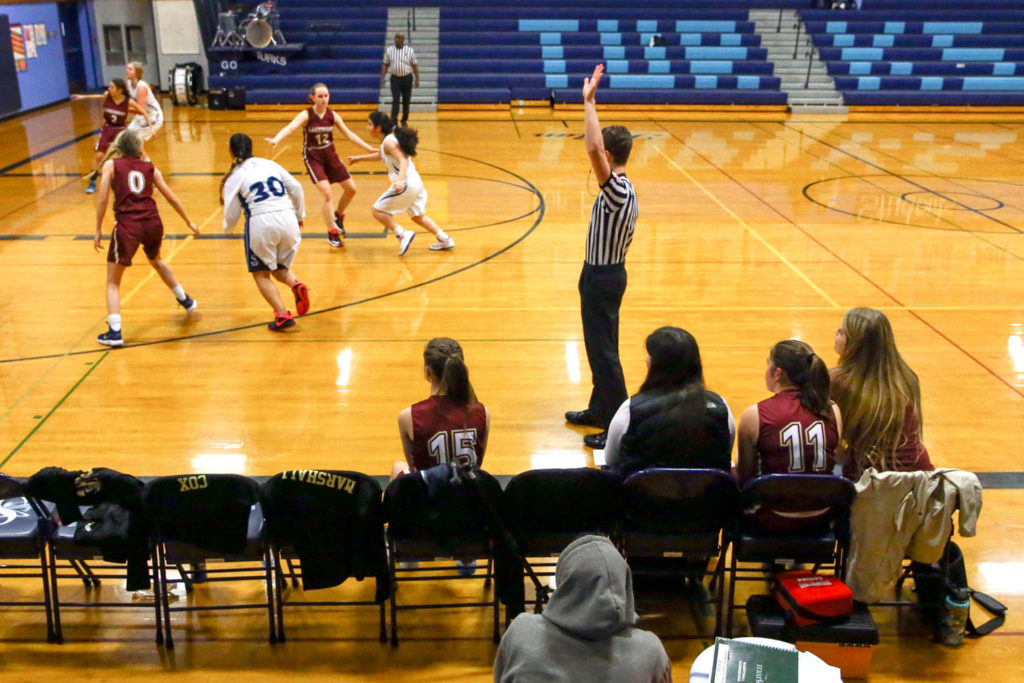In 34 years of coaching basketball, Lakewood girls coach Chris Walster had never seen so few girls come out for his team.
Just 16 students turned out for the Cougars’ girls basketball team this season, barely enough for the Class 2A school to field varsity and junior varsity squads.
“In the last three years, it’s changed dramatically,” Walster said of turnouts for the team. “I can still remember the days not too long ago where we couldn’t promise every kid they were going to be on the team. We were going to make cuts just like our guys team.”
Walster, who teaches video production at Lakewood, tried to get ahead of that trend before the season. He said he tried to recruit students from around the school more than ever, creating commercials and flyers to promote joining the team.
“He tried anything shy of straight up bribery to get some girls to turn out this year,” Lakewood athletics director Kristen Twedt said with a laugh.
Lakewood’s coach was able to get a few new faces out this season, but the low turnout has still forced the Cougars to run with just seven players on their junior varsity team, which has had to cancel three games this season.
Lakewood’s low turnout is far from an anomaly, though. While the Cougars have struggled to field a full junior varsity team this season, a number of the area’s larger schools are also seeing a decline in girls basketball turnout that has lead to far fewer programs fielding C-teams.
Eight of the 23 teams across Wesco didn’t field a C-team this season. And one, Marysville Pilchuck, has a C-team, but not a junior varsity.
“It’s alarming,” Edmonds-Woodway athletics director Angie McGuire said. “I think everybody involved in trying to build and promote and grow girls basketball is concerned about the numbers this year. And I know that the coaches and athletic directors at those schools are concerned about it.”
Last season, six Wesco schools didn’t field C-teams.
“The last year or two it’s exploded in terms of the number of schools that can’t get a C-team,” Lynnwood athletics director Rob McMains said. “When I first started at Lynnwood in 2007, I don’t know if there was anyone who didn’t field a C-team. I don’t even remember the issue even coming up.”
Among the schools that aren’t fielding C-teams this year are 4A schools Cascade, Kamiak, Jackson and Monroe. And Snohomish, a 3A program with a rich tradition of success, also is without a third squad for the first time in coach Ken Roberts’ tenure, which started in 2000.
Some schools that are fielding C-teams have found it increasingly hard to be at a comfortable number of players to field three teams when the season starts.
McMains said ideally a program would want at least 30 kids to field three teams, but that the Royals have done it with less, noting Lynnwood’s seven-person C-team during the 2017-18 season.
“That’s scary because you’re afraid to start the season with seven because injuries, you get a kid ineligible and now you’re done,” he said. “Somehow we played the entire season with those seven and they had a good season. They had a winning record, but it’s a roll of the dice when you start the season like that. So I think you always want to have 10 (on each team) if possible.
“You don’t want to start the season, play a few games and then cancel the rest of the season, because then you leave the rest of the league in a lurch.”
The trend of less participation in high school girls basketball locally falls in line with the most recent report from the National Federation of State High Schools Associations.
A 2019 report released by the NFHS said the number of girls playing basketball nationally during the 2018-19 school year — 399,067 — was the fewest since the 1992-93 school year.
That may sound surprising due to the continuous growth in popularity of women’s basketball at the professional and college levels over the past several years.
Exposure to the game is ever increasing, and a generation of female athletes that have grown up with opportunities to watch the dominant University of Connecticut women’s teams and individual greats like Sue Bird, Candace Parker and Diana Taurasi, are helping take the game to a new level.
On Jan. 14, the WNBA and the WNBA Players Association finalized a new collective-bargaining agreement that will push players’ average salaries into six figures for the first time and provide better travel and lodging amenities for players.
And players like Oregon’s Sabrina Ionescu and former Baylor standout Brittney Griner have reached levels of stardom in college that previously were unheard of in the women’s game.
The level of the game is at an all-time high. So is exposure. But participation numbers at the lower levels aren’t quite following suit.
So why are less girls sticking with basketball through high school?
The most common answers from local coaches and athletic directors were the trend of single-sport specialization and some aspects of AAU or feeder basketball programs that may deter kids from continuing with the sport.
Sports specialization has become a growing trend over the past few decades, with more athletes deciding to pursue a single sport often with goals of taking their game to the collegiate level and beyond. Many of these athletes play year-round on select or club teams.
“It’s harder for girls to play in other sports if their (main) sport is year-round,” McGuire said. “I’ve even seen that in elementary school where kids just cannot even continue to play two sports because of the commitment they’ve made to select programs.”
Coaches and athletic directors noted volleyball as a sport that’s seen a rise in popularity at the club level recently.
“With girls, sports specialization is huge. It used to be that your best athletes played multiple sports, and you hope that that is still the case,” McGuire said. “… The number of girls that are playing (both) volleyball and basketball now has greatly diminished with the increased number of club volleyball teams because their season goes through the high school basketball season. There might be a few girls that can play both club volleyball and for their high school basketball team, but for the most part the girls that are playing club volleyball aren’t playing basketball.”
Coaches and athletic directors said their schools try to promote playing multiple sports to their student-athletes, but often times a kid has picked a sport before they reach high school.
Roberts said high school coaches need to be reaching out to the middle school athletes that feed into their programs and promote the benefits of being a multi-sport athlete sooner rather than later.
Creating a connection between programs is also something McGuire highlighted as a key dynamic for high schools and their local AAU and feeder programs.
The aspects of AAU and feeder basketball programs that worry local coaches and athletic directors stem from players getting cut at an early age and programs that focus more on winning than development of the entire team.
Players are undoubtedly coming in more skilled than ever. Five of 11 all-league girls basketball selections in Wesco 4A last season were freshmen and sophomores, and just 7 of 18 all-league selections in Wesco 3A/2A last season were seniors.
There’s just less quantity.
“I think the developmental programs, the youth programs, although the girls get better playing in them … those people are also cutting down to 10 kids a lot of times and a high school coach doesn’t have a say in what’s going into that, doesn’t want to have a say, shouldn’t have a say because it’s not their deal,” Roberts said. “But it kills you later because those kids don’t always turn out again. The kids might be getting better earlier. The problem is we aren’t getting to see some of the better athletes because they are making the decision to not turn out again if they get cut in sixth-, seventh-, eight-grade feeder programs.”
McGuire believes that communication between coaches and local youth programs is key in keeping girls interested in continuing with basketball.
Many coaches do try to foster relationships with their local youth programs. Walster said Lakewood expects a large freshmen class of around 12 girls to help boost numbers next season as the first wave of Lakewood’s recently started girls AAU program reaches high school. But constant changes atop local feeder and AAU programs can make developing those bonds tough at times.
Many of the challenges of combating declining numbers in a sport can be tough, but local coaches and athletic directors are searching for solutions.
“I’ve had conversations with athletic directors and coaches from around the league about the numbers,” McGuire said. “It’s something that people are definitely aware of and definitely talking about what are some of those things that we can be doing in our communities and things that we could be doing at the high school level to try to remedy that.”
Talk to us
> Give us your news tips.
> Send us a letter to the editor.
> More Herald contact information.




























